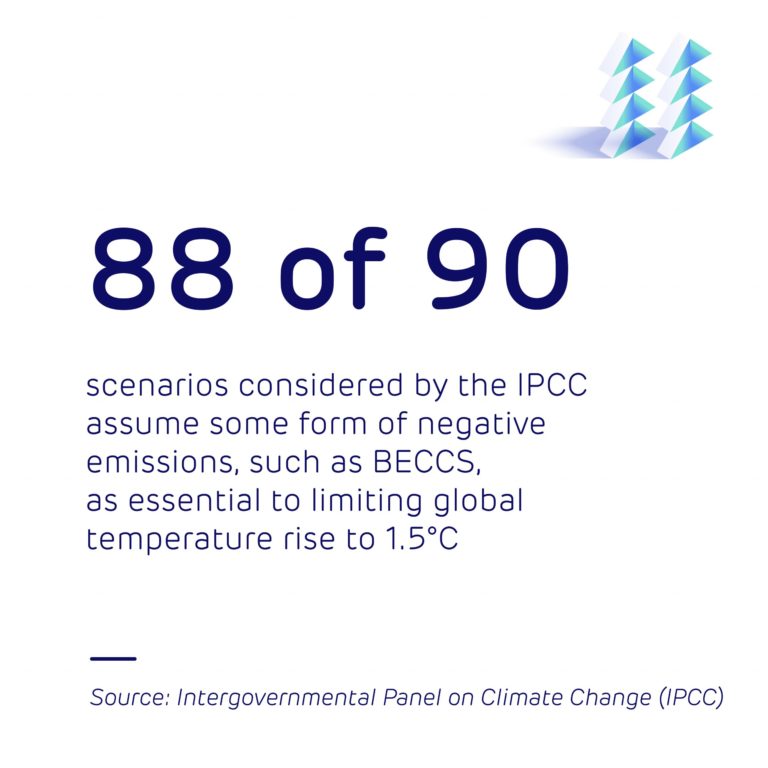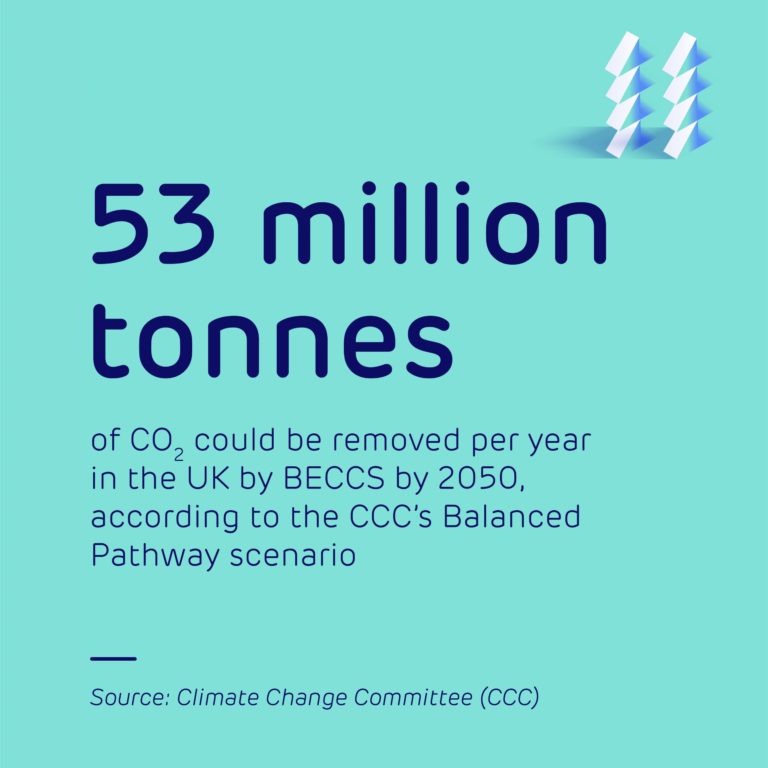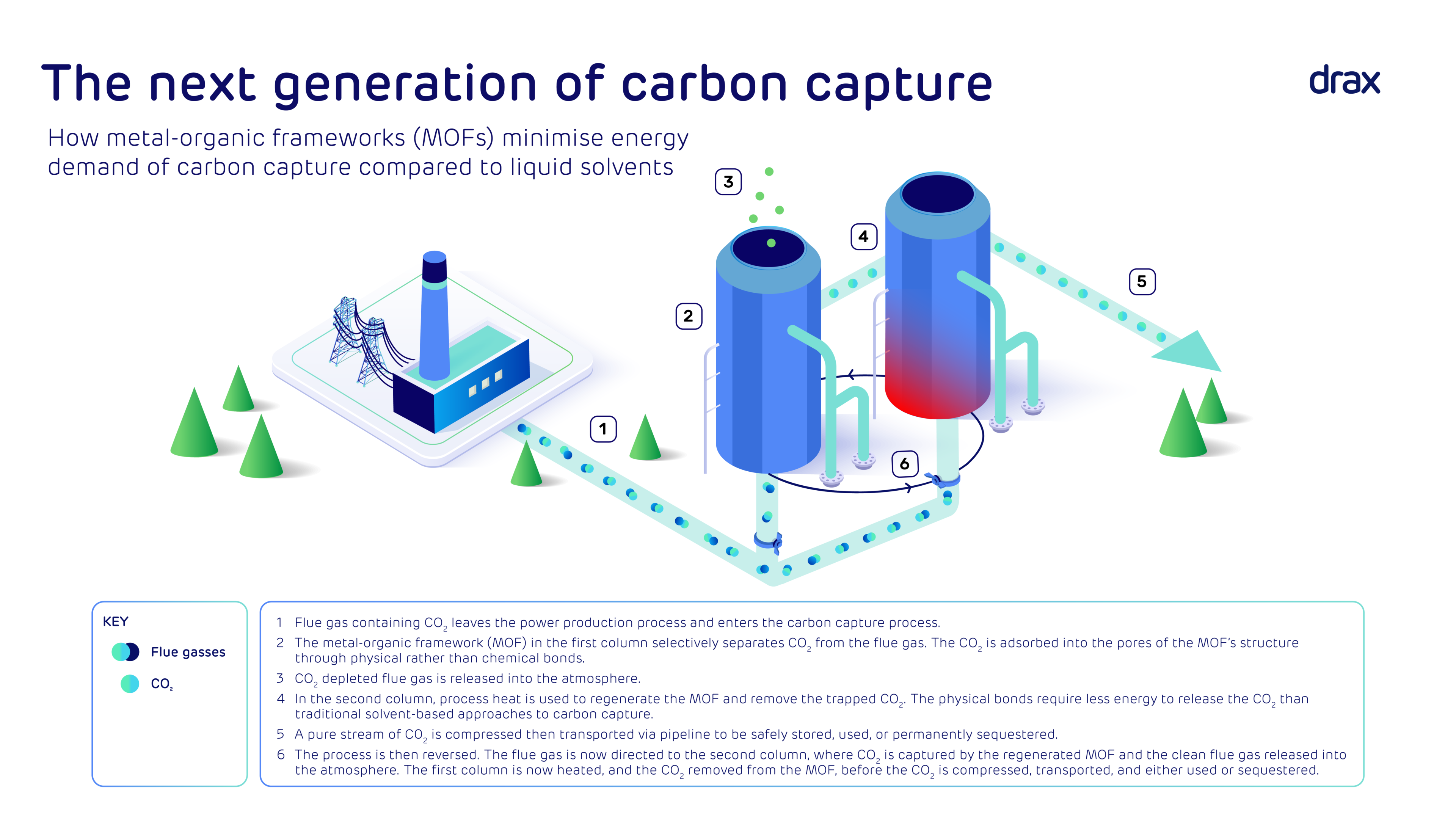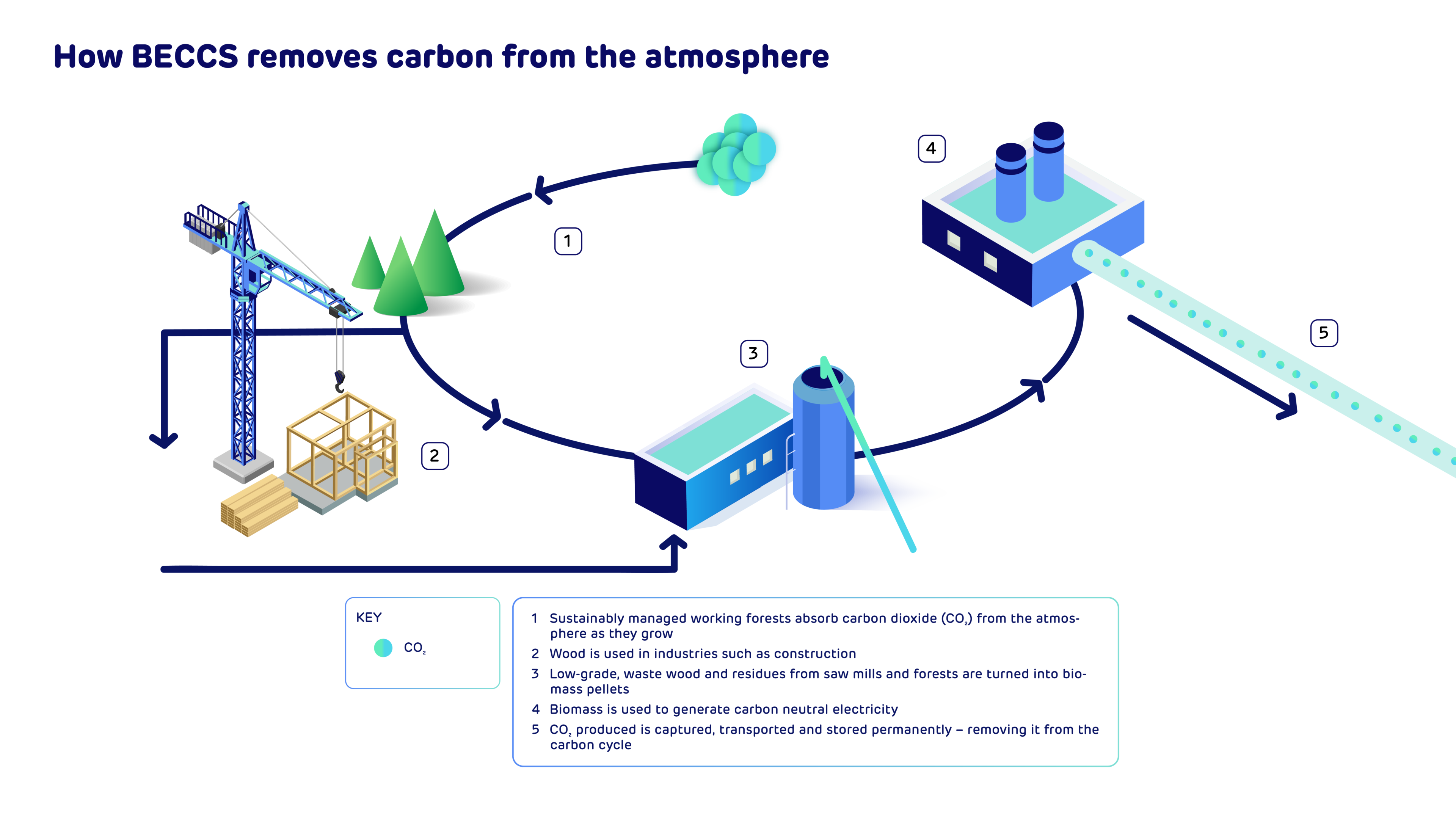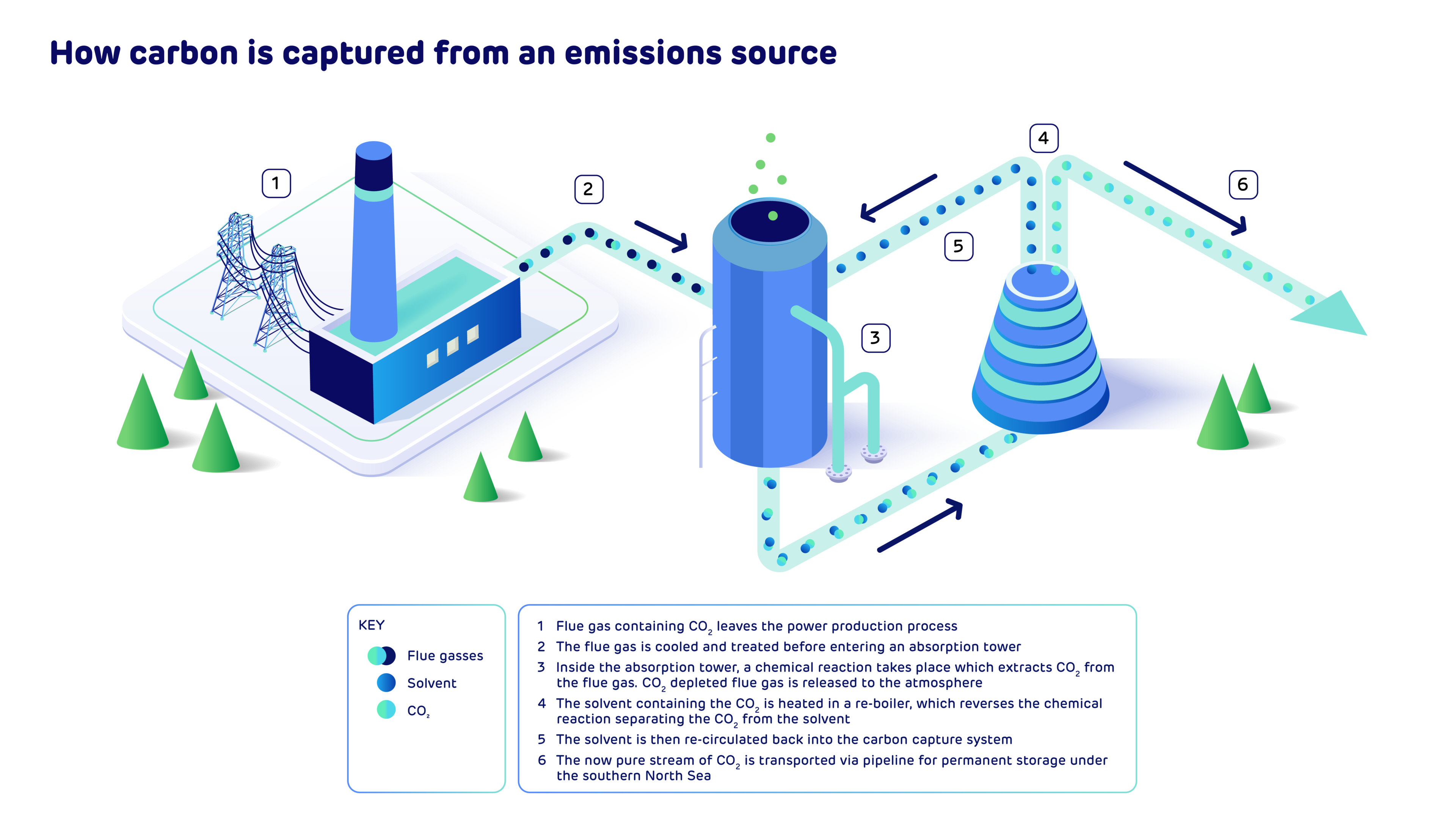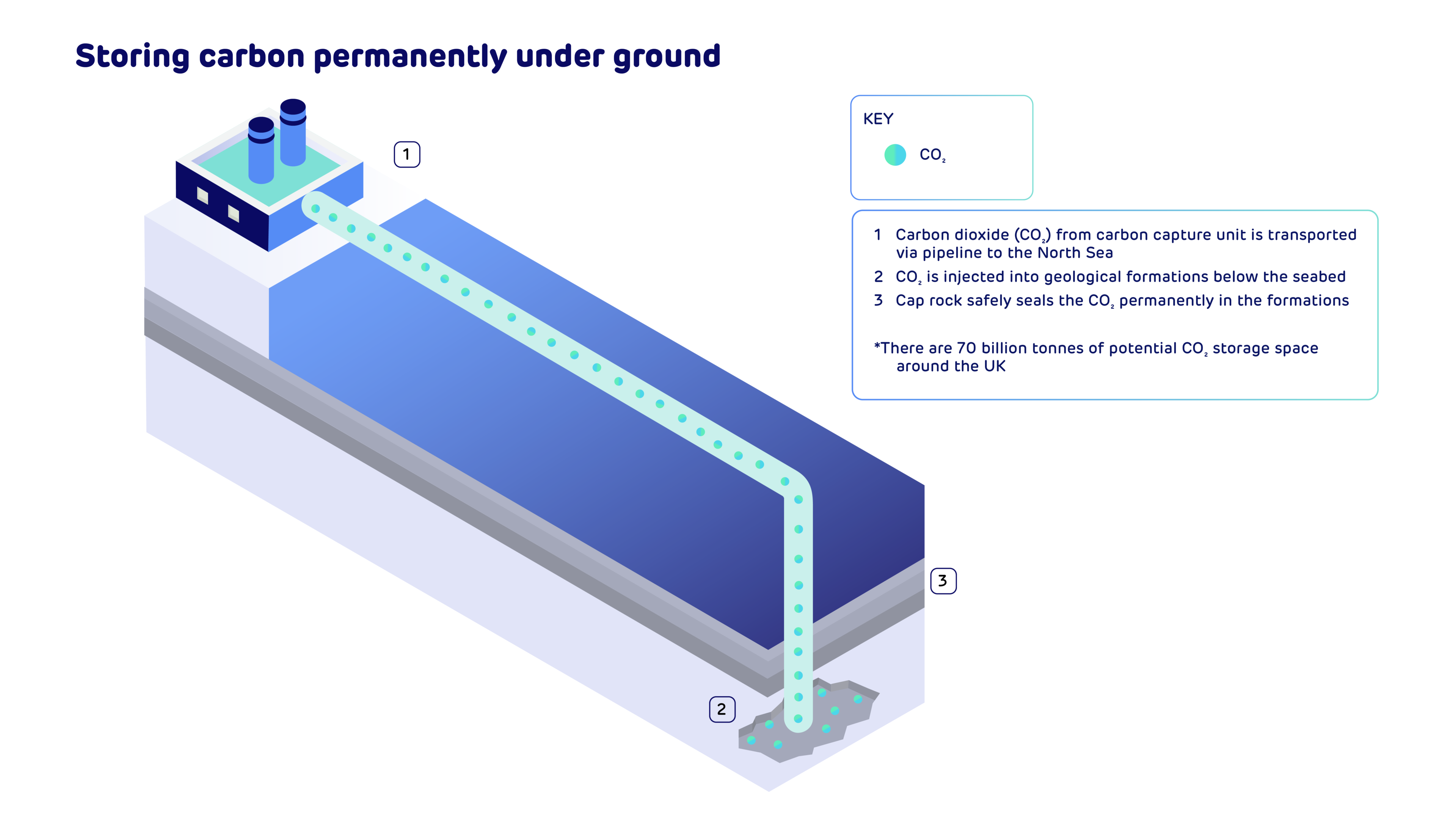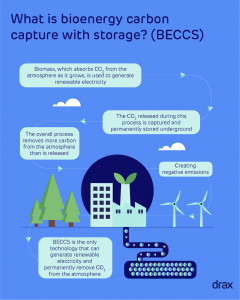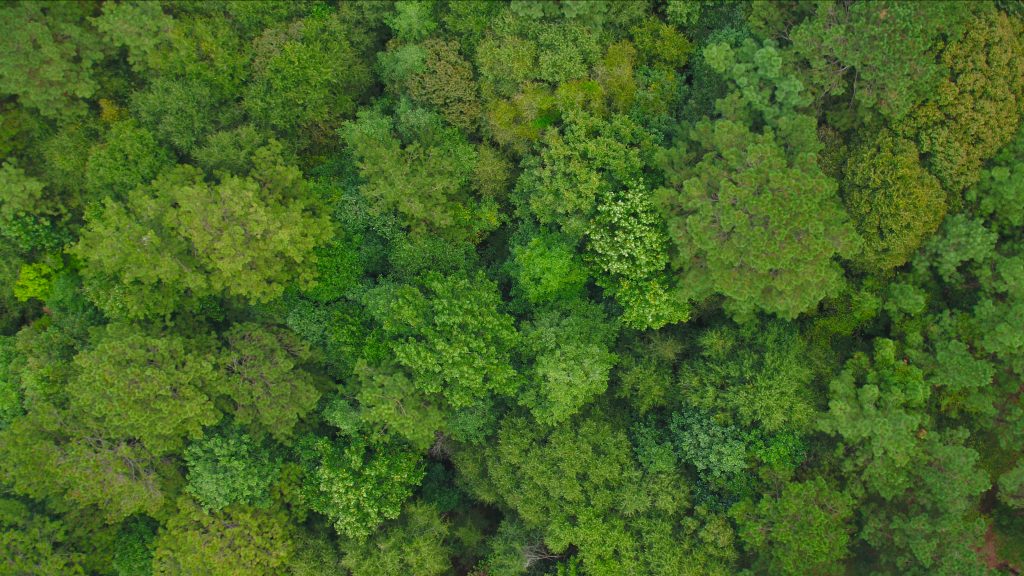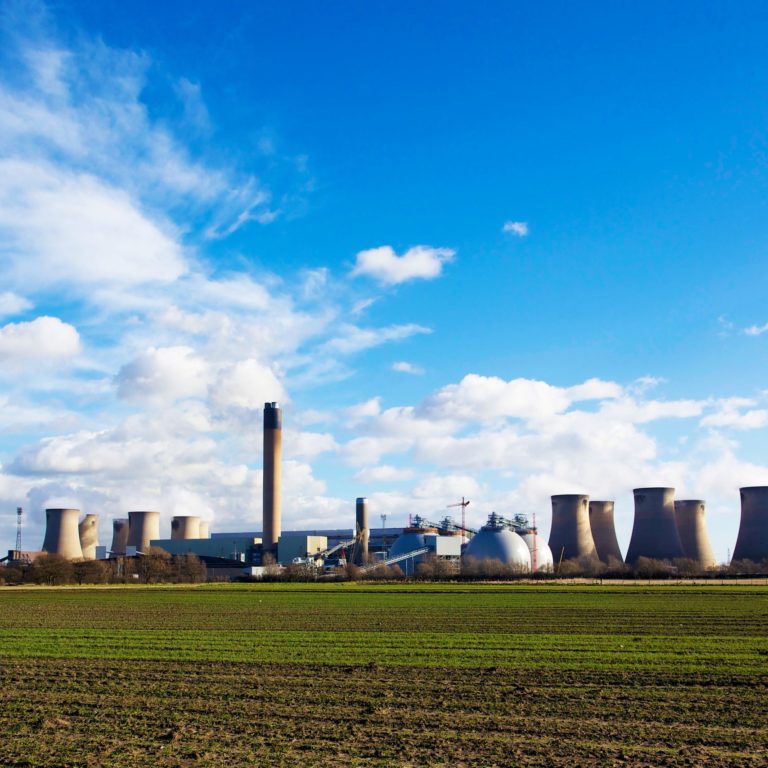What is BECCS?
Bioenergy with carbon capture and storage is the process of capturing and permanently storing carbon dioxide (CO2) that is generated during the production of electricity from sustainable biomass.
This is the only carbon removal technology that also generates low carbon renewable power.
National Grid ESO's Future Energy Scenarios Report
National Grid ESO’s Future Energy Scenarios Report highlights the critical role BECCS will play in helping the UK reach net zero.

Our CEO, Will Gardiner said: “National Grid ESO’s Future Energy Scenario’s report makes it clear that deploying BECCS is absolutely critical for the UK to achieve net zero. There is no scenario under which BECCS is not required.
“Power BECCS is such a vital technology because it delivers reliable renewable power whilst permanently removing carbon dioxide from the atmosphere. According to National Grid’s report it is the most viable large scale carbon removal option available.”
Why is BECCS important for decarbonisation?
Unlike the linear, irreversible process of emitting carbon from fossil fuels, sustainable biomass exists in a closed carbon cycle.
By adding carbon capture and storage technology, the carbon cycle is broken. Instead of being released into the atmosphere, carbon is transported and stored in a secure, geological formation underground, producing what’s known as an engineered carbon dioxide removal.
Frequently Asked Questions
- What is BECCS?
- How does BECCS achieve negative emissions?
- Is BECCS a proven technology?
- Is BECCS sustainable?
- Will BECCS at Drax create any new jobs?
- How will BECCS be funded?
- Is transporting and storing CO2 safe?
- How will the captured carbon be stored?
BECCS is an innovative technology that has been developed to permanently remove carbon dioxide from the atmosphere.
BECCS provides negative emissions, as well as stable, renewable electricity and will play a vital role in tackling the climate crisis and supporting energy security.
What is BECCS?
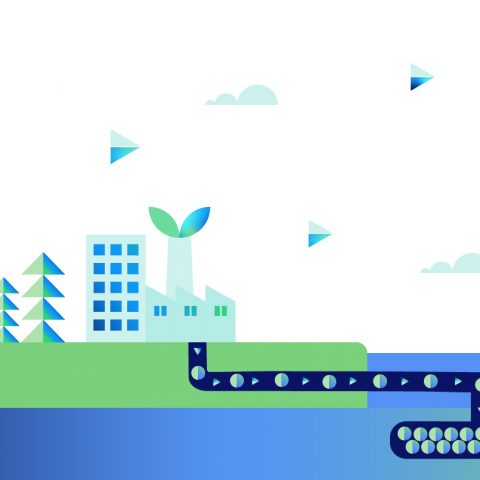 Negative emissions are created when you permanently remove more CO2 from the atmosphere than is created across your operations.
Negative emissions are created when you permanently remove more CO2 from the atmosphere than is created across your operations.
With BECCS, flue gases are produced when sustainable biomass is used to generate renewable electricity, these gasses are captured through a chemical reaction. The captured CO2 is then stored permanently in deposits such as saline aquifers found under the sea. The process of electricity generation becomes carbon negative, as more CO2 has been removed from the atmosphere than has been added.
What are negative emissions?
![]()
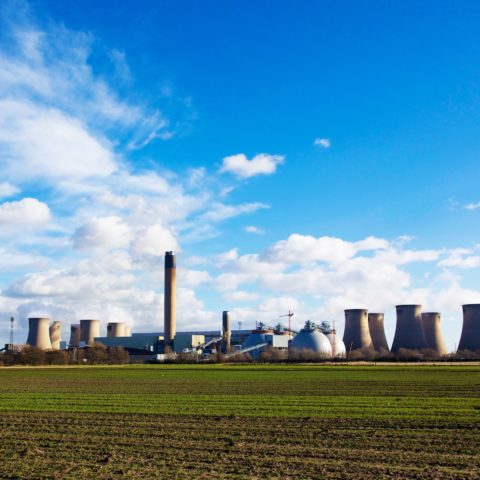 Yes. Drax has been testing a number of carbon capture technologies since our first trial began in 2018.
Yes. Drax has been testing a number of carbon capture technologies since our first trial began in 2018.
Carbon capture technology is not new and has been used in the fossil fuel and oil & gas industries for many years. There are currently 26 CCS facilities operating worldwide, with a further 39 either planned or under construction.
 Research commissioned by Drax shows there is enough sustainable biomass available globally to support BECCS projects to capture up to 4GT of CO2 without adversely impacting forest health, biodiversity or food security.
Research commissioned by Drax shows there is enough sustainable biomass available globally to support BECCS projects to capture up to 4GT of CO2 without adversely impacting forest health, biodiversity or food security.
This is equivalent to four times the annual CO2 emissions from commercial aviation.
Learn more about sustainable biomass
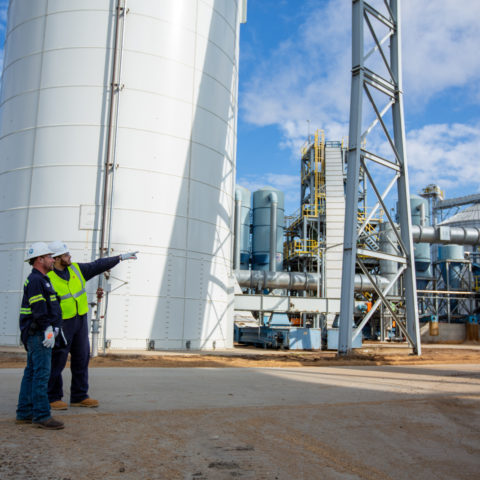 BECCS by Drax offers a decarbonisation route that protects and creates jobs retaining high-quality jobs and boosting local economies.
BECCS by Drax offers a decarbonisation route that protects and creates jobs retaining high-quality jobs and boosting local economies.
BECCS at Drax Power Station could create and support over 10,000 jobs locally and across the entire supply chain. By deploying cutting-edge green technologies across the Humber, this could rise to 47,800 jobs at peak, according to a report by Vivid Economics.
BECCS careers
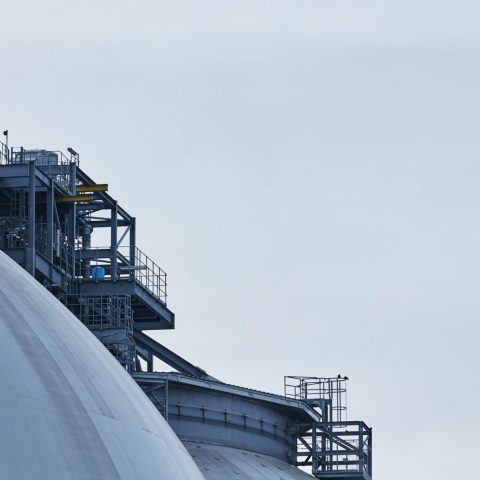 In the current economic climate, it’s vital that new projects such as BECCS provide cost effective solutions that not only support energy security, but also deliver on net zero targets.
In the current economic climate, it’s vital that new projects such as BECCS provide cost effective solutions that not only support energy security, but also deliver on net zero targets.
By having the right policies which incentivise investment we could see a repeat of the success seen with the CfDs for offshore wind – that sector has reached grid parity and no longer requires subsidies.
A recent report commissioned by Drax by consultancy Frontier Economics looked into the optimum funding methods that would allow negative emissions technologies like BECCS be delivered cost effectively.
The Drax BECCS project would be financed through private investment. However, as negative emissions in the UK are not currently rewarded or incentivised today, we need the UK Government to create an investment framework that would provide the necessary confidence to Drax and its investors to commit capital to the project.
This approach has been very successful previously with the support given to renewables like wind, solar and biomass – as a result the UK’s electricity system has decarbonised at a faster rate than any other country’s.
 Yes. Drax, alongside our partners – National Grid Ventures and Equinor – have decades of experience safely transporting gas by pipeline and injecting and storing CO2 in saline aquifers offshore.
Yes. Drax, alongside our partners – National Grid Ventures and Equinor – have decades of experience safely transporting gas by pipeline and injecting and storing CO2 in saline aquifers offshore.
In the UK, the North Sea is already home to significant CCS projects such as the Equinor-operated Sleipner field in the Norwegian sector which is now capturing and storing around 1 million tonnes of CO2 each year from natural gas. Since the Sleipner project started in 1996 around 20 million tonnes of CO2 has been safely captured and stored under the seabed.
Estimates suggest the UK could have up to 80 billion tonnes of CO2 storage accessible offshore, and the Sleipner field CCS project demonstrates the feasibility of this technology and the potential for Britain to use the North Sea in the fight against climate change.
Transporting carbon – How to safely move CO2 from the atmosphere to permanent storage
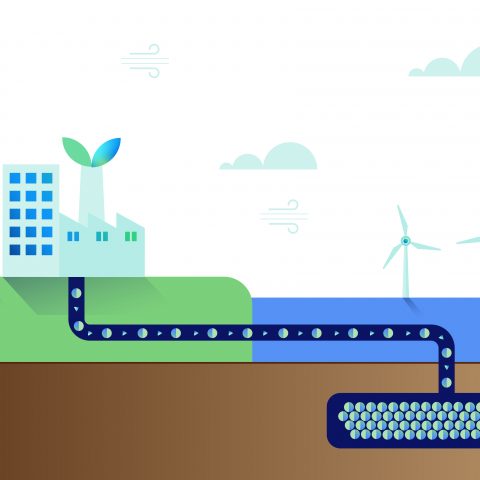
Captured carbon can be safely and permanently injected deep underground into naturally occurring porous rock formations. The carbon is trapped in multiple ways:
- Structurally—animpermeable caprock above the reservoir stops CO2 migrating back to the surface.
- In solution — porous rocks often contain salty water which CO2 dissolves into.
- Residually — as tiny isolated bubbles in the pore space of the rock.
- As a mineral — CO2 can react with the surrounding rock creating new solid minerals.
BECCS is an innovative technology that has been developed to permanently remove carbon dioxide from the atmosphere.
BECCS provides negative emissions, as well as stable, renewable electricity and will play a vital role in tackling the climate crisis and supporting energy security.
What is BECCS?
View More Negative emissions are created when you permanently remove more CO2 from the atmosphere than is created across your operations.
Negative emissions are created when you permanently remove more CO2 from the atmosphere than is created across your operations.
With BECCS, flue gases are produced when sustainable biomass is used to generate renewable electricity, these gasses are captured through a chemical reaction. The captured CO2 is then stored permanently in deposits such as saline aquifers found under the sea. The process of electricity generation becomes carbon negative, as more CO2 has been removed from the atmosphere than has been added.
What are negative emissions?
View More![]()
 Yes. Drax has been testing a number of carbon capture technologies since our first trial began in 2018.
Yes. Drax has been testing a number of carbon capture technologies since our first trial began in 2018.
Carbon capture technology is not new and has been used in the fossil fuel and oil & gas industries for many years. There are currently 26 CCS facilities operating worldwide, with a further 39 either planned or under construction.
View More Research commissioned by Drax shows there is enough sustainable biomass available globally to support BECCS projects to capture up to 4GT of CO2 without adversely impacting forest health, biodiversity or food security.
Research commissioned by Drax shows there is enough sustainable biomass available globally to support BECCS projects to capture up to 4GT of CO2 without adversely impacting forest health, biodiversity or food security.
This is equivalent to four times the annual CO2 emissions from commercial aviation.
Learn more about sustainable biomass
View More BECCS by Drax offers a decarbonisation route that protects and creates jobs retaining high-quality jobs and boosting local economies.
BECCS by Drax offers a decarbonisation route that protects and creates jobs retaining high-quality jobs and boosting local economies.
BECCS at Drax Power Station could create and support over 10,000 jobs locally and across the entire supply chain. By deploying cutting-edge green technologies across the Humber, this could rise to 47,800 jobs at peak, according to a report by Vivid Economics.
BECCS careers
View More In the current economic climate, it’s vital that new projects such as BECCS provide cost effective solutions that not only support energy security, but also deliver on net zero targets.
In the current economic climate, it’s vital that new projects such as BECCS provide cost effective solutions that not only support energy security, but also deliver on net zero targets.
By having the right policies which incentivise investment we could see a repeat of the success seen with the CfDs for offshore wind – that sector has reached grid parity and no longer requires subsidies.
A recent report commissioned by Drax by consultancy Frontier Economics looked into the optimum funding methods that would allow negative emissions technologies like BECCS be delivered cost effectively.
The Drax BECCS project would be financed through private investment. However, as negative emissions in the UK are not currently rewarded or incentivised today, we need the UK Government to create an investment framework that would provide the necessary confidence to Drax and its investors to commit capital to the project.
This approach has been very successful previously with the support given to renewables like wind, solar and biomass – as a result the UK’s electricity system has decarbonised at a faster rate than any other country’s.
View More Yes. Drax, alongside our partners – National Grid Ventures and Equinor – have decades of experience safely transporting gas by pipeline and injecting and storing CO2 in saline aquifers offshore.
Yes. Drax, alongside our partners – National Grid Ventures and Equinor – have decades of experience safely transporting gas by pipeline and injecting and storing CO2 in saline aquifers offshore.
In the UK, the North Sea is already home to significant CCS projects such as the Equinor-operated Sleipner field in the Norwegian sector which is now capturing and storing around 1 million tonnes of CO2 each year from natural gas. Since the Sleipner project started in 1996 around 20 million tonnes of CO2 has been safely captured and stored under the seabed.
Estimates suggest the UK could have up to 80 billion tonnes of CO2 storage accessible offshore, and the Sleipner field CCS project demonstrates the feasibility of this technology and the potential for Britain to use the North Sea in the fight against climate change.
Transporting carbon – How to safely move CO2 from the atmosphere to permanent storage
View More
Captured carbon can be safely and permanently injected deep underground into naturally occurring porous rock formations. The carbon is trapped in multiple ways:
- Structurally—animpermeable caprock above the reservoir stops CO2 migrating back to the surface.
- In solution — porous rocks often contain salty water which CO2 dissolves into.
- Residually — as tiny isolated bubbles in the pore space of the rock.
- As a mineral — CO2 can react with the surrounding rock creating new solid minerals.
The impact of BECCS in communities in the UK
Our cutting-edge carbon removal technologies will help the UK, and the world, hit net zero, whilst creating further opportunities for the communities we operate in.
11%
One unit of BECCS at Drax is 11% of the negative emissions the CCC say are needed to hit net zero in 2050 (35.8Mt in the 7th CB analysis)
10,000
Developing BECCS at Drax Power Station will deliver significant advantages for local communities and help revitalise the North of England. The technology will support 10,000 jobs and make the region a global centre for excellence in green skills.
80%
During the BECCS construction phase at Drax Power Station in North Yorkshire, Drax will spend £100 million across our supply chain – with an ambition that 80% of construction spend will go to UK companies.
Working with governments
We work with regional and national policymakers, in the UK, US and Canada, to support Governments in developing effective carbon removal policies and investment frameworks.
We collaborate with a wide range of stakeholders – including communities, partner organisations, trade associations, NGOs, think tanks and academia – to share the benefits of BECCS and ensure that the needs of the industry as well as our position are considered. It also gives us the opportunity to gain a better understanding of their priorities and concerns. We also support different stakeholders in campaigning for, and raising issues of importance to, their constituents to enable skills, jobs, and investment.








